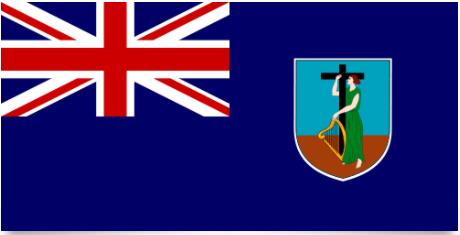Montserrat Flag and Meaning
Flag of Montserrat

Montserrat Flag Meaning
Montserrat Overview
| Population | 11,000 |
| Currency | East Caribbean dollars |
| Area | 100 km² |
| Capital city | Plymouth |
| Population density | 110 residents/km² |
Montserrat is located in the Caribbean 400 km east of Puerto Rico and northwest of Guadeloupe. The island is of volcanic origin and the landscape is mountainous with altitudes of over 1,000 m. The climate is tropical and rainy, but somewhat moderated by the sea’s influence. In the low lying areas, the soil is relatively fertile and suitable for agriculture.
The people: The population is predominantly of African origin with a small minority of European origin.
Religion: Predominantly Christian – Anglicans, Catholics and Methodists
Language: English (official). Most speak a local dialect
Political parties: Popular Progressive Alliance (PPA) – the former Popular Liberation Movement; Movement for National Reconstruction (MNR) – Former Democratic Progressive Party (DPP); National Progressive Party (NPP).
Social organizations: United Workers Union of Montserrat, led by George Irish. The organization has 1,300 members and is the country’s only national organization. There is a teacher union with 120 members and a union for seamen and port workers with 122 members.
Official name: Montserrat
Capital: Brades, 1,000 residents (2007) The former capital, Plymouth, was evacuated and abandoned following the 1997 volcanic eruption.
Government: Elizabeth Carriere has been governor since August 2015, appointed by the British Queen. Donaldson Romeo has been head of government since September 2014. Parliament has one chamber with nine members elected for a five-year term.













































